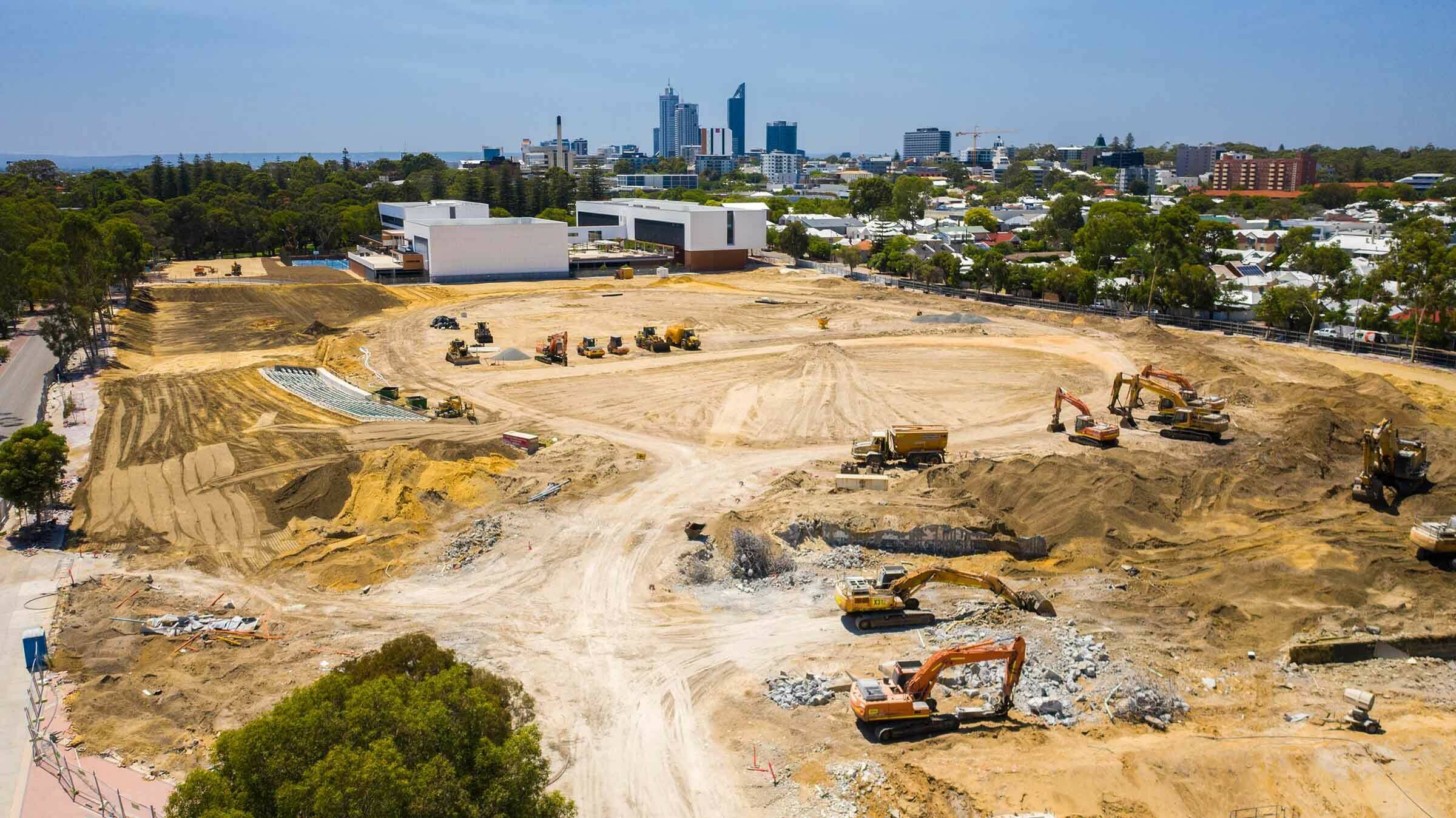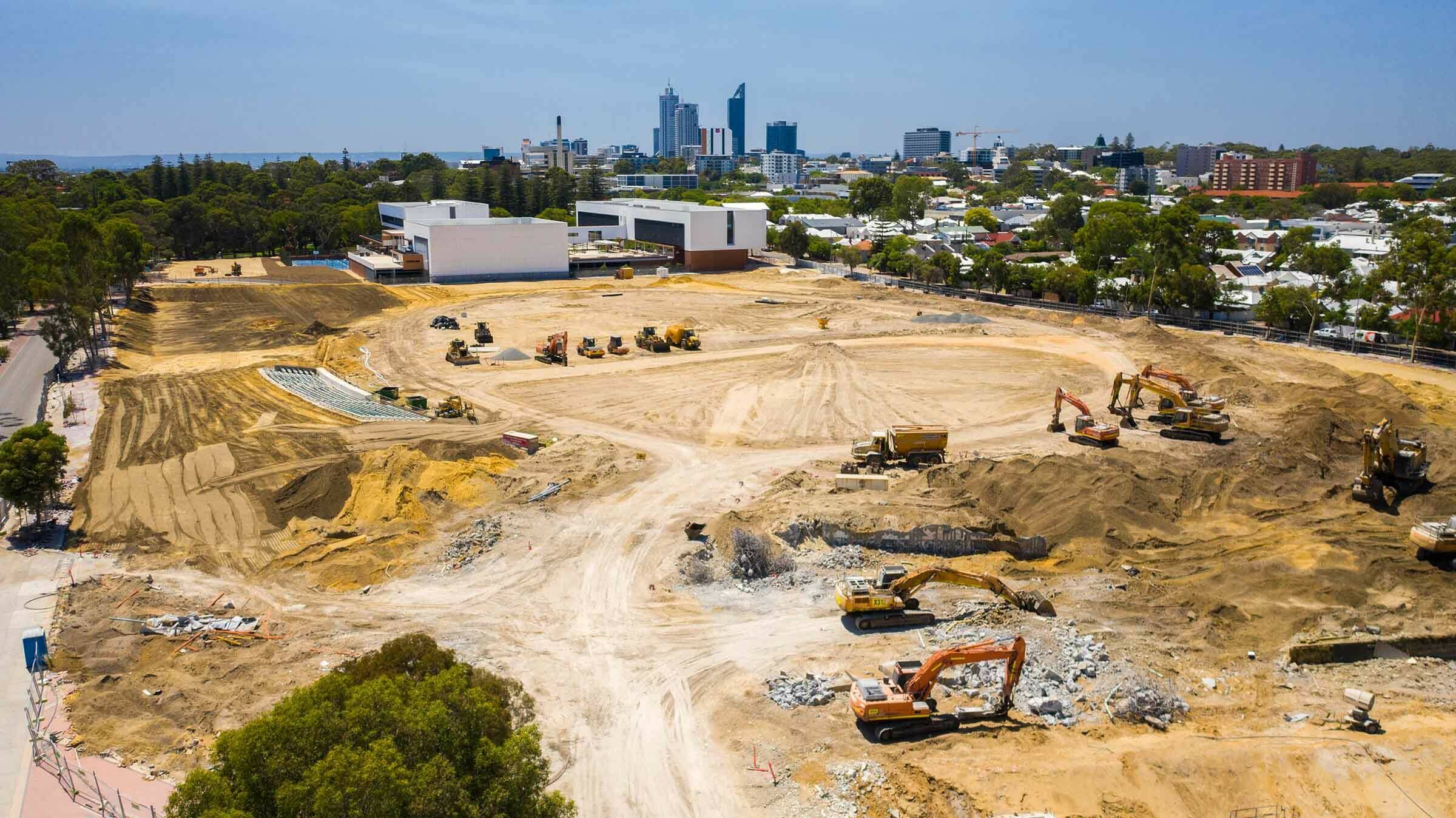Located within the 35-hectare Subi East redevelopment area, the former Princess Margaret Hospital (PMH) closed in 2018 after 109 years of operation.
Early in the planning phase, the demolition of PMH was identified as an opportunity to raise the bar for waste and resource recovery, building on the learnings from the demolition of the nearby Subiaco Oval.
Princess Margaret Hospital demolition
With a target of at least 96 per cent waste reuse and recycling, the development team sought to:
Process and sort demolition materials to be recycled and reused in the construction industry, excepting only hazardous materials;
Donate functioning medical equipment and office furniture to charitable causes wherever possible;
Reuse materials onsite, other than those with a higher value elsewhere in the economy; and
Incorporate recycled materials and products into the design and construction of the PMH Precinct.
In total, 59,000 tonnes of non-hazardous materials were recovered from the site, of which 99.58 per cent has been recycled into reusable materials.
A significant number of materials have been retained for use in the future development including crushed concrete for future road base; reclaimed bricks for retaining walls in the public realm; medical equipment and artefacts retained for use in shadow boxes around parklands; and timbers to create a new gazebo.

Princess Margaret Hospital demolition
Located within the 35-hectare Subi East redevelopment area, the former Princess Margaret Hospital (PMH) closed in 2018 after 109 years of operation.
Early in the planning phase, the demolition of PMH was identified as an opportunity to raise the bar for waste and resource recovery, building on the learnings from the demolition of the nearby Subiaco Oval.
With a target of at least 96 per cent waste reuse and recycling, the development team sought to:
Process and sort demolition materials to be recycled and reused in the construction industry, excepting only hazardous materials;
Donate functioning medical equipment and office furniture to charitable causes wherever possible;
Reuse materials onsite, other than those with a higher value elsewhere in the economy; and
Incorporate recycled materials and products into the design and construction of the PMH Precinct.
In total, 59,000 tonnes of non-hazardous materials were recovered from the site, of which 99.58 per cent has been recycled into reusable materials.
A significant number of materials have been retained for use in the future development including crushed concrete for future road base; reclaimed bricks for retaining walls in the public realm; medical equipment and artefacts retained for use in shadow boxes around parklands; and timbers to create a new gazebo.
